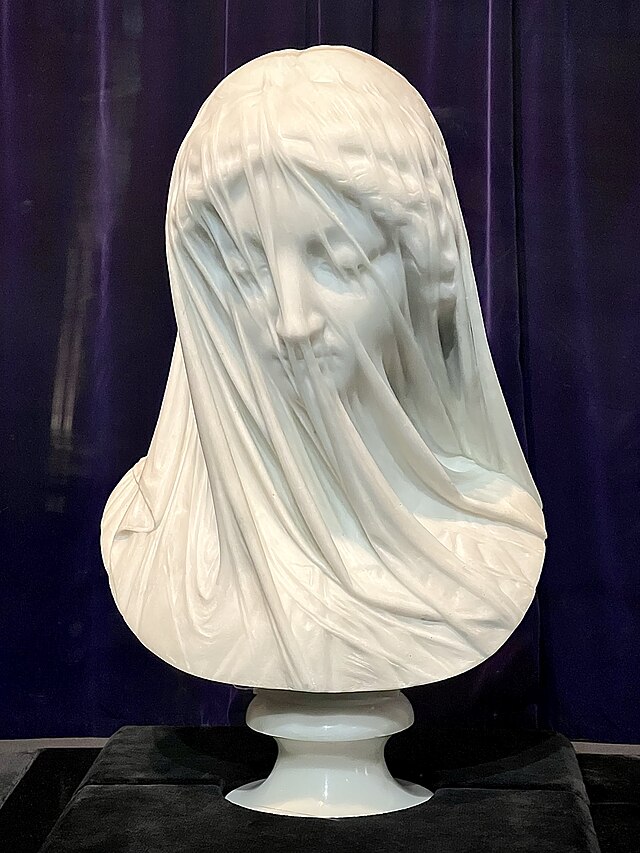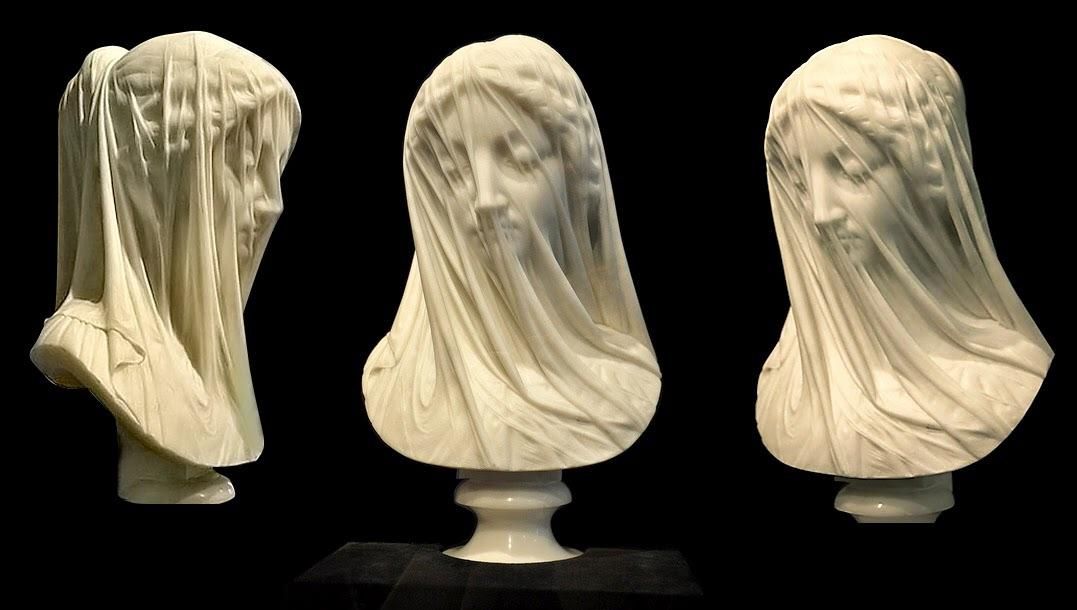This statue was executed in flawless Carrera marble by the renowned Italian sculptor Giovanni Strazza (1818-1875) in Rome. Other examples of Strazza’s work can be found in the Vatican Museums and at the Archbishop’s Palace in Milan. The St. John’s Veiled Virgin was described by The Newfoundlander on December 4, 1856, as the second such work by Strazza on the subject of a veiled woman.
During the mid-19th century, Italian nationalism was on the rise, leading to a resurgence in nationalism in the Italian arts and music. Strazza’s Veiled Virgin aligns with this Risorgimento school of Italian nationalist art. The image of a veiled woman was a favorite subject among a whole school of Strazza’s fellow sculptors, including Pietro Rossi and Rafaello Monti. Often, the image of the veiled woman was intended to embody Italia, similar to how Britannia symbolized England, Hibernia symbolized Ireland, and Lady Liberty symbolized the United States.

There are similar marble busts depicting veiled women in Canada, the United States, Ireland, and England. However, none are as meticulously crafted as Strazza’s Newfoundland Veiled Virgin. The facial features and braids in the hair are clearly visible through the stone veil.

On December 4, 1856, Bishop John Thomas Mullock recorded in his diary: “Received safely from Rome, a beautiful statue of the Blessed Virgin Mary in marble, by Strazza. The face is veiled, and the figure and features are all seen. It is a perfect gem of art.” The Veiled Virgin remained at the Episcopal Palace adjacent to the Roman Catholic Cathedral in St. John’s until 1862 when the bishop presented the bust to the Superior of Presentation Convent, Mother Mary Magdalene O’Shaughnessy. Bishop Mullock’s sister, Sister Mary di Pazzi Mullock, was a professed member of that community and later its Superior.

Strazza’s sculpting confidently revives the ingenuity of the Baroque and represents a technical triumph that surpasses any other work of art found in 19th century Newfoundland. The Veiled Virgin also testifies to the close connections between the Irish Catholic community in St. John’s and the cultural and nationalist movements of the day in Europe.
The Veiled Virgin remains in the care of the Presentation Sisters, Cathedral Square. It may be viewed by appointment.




